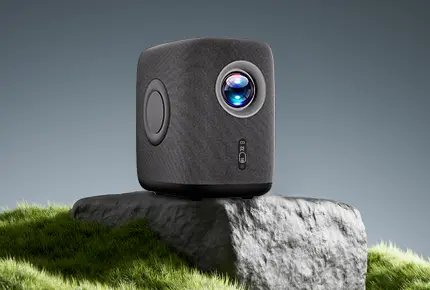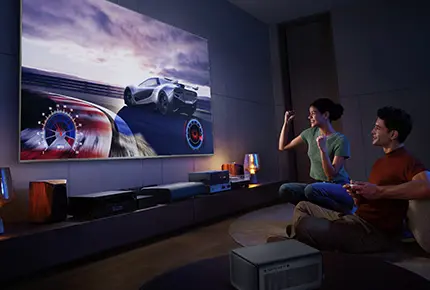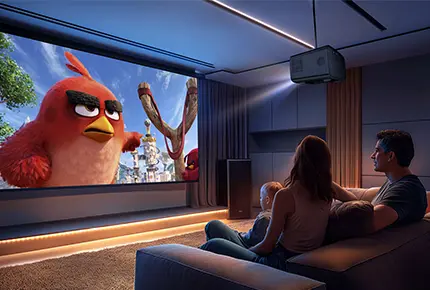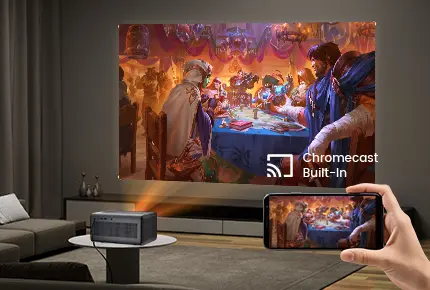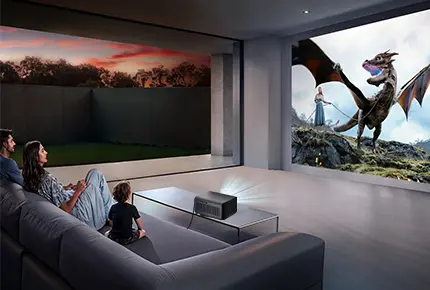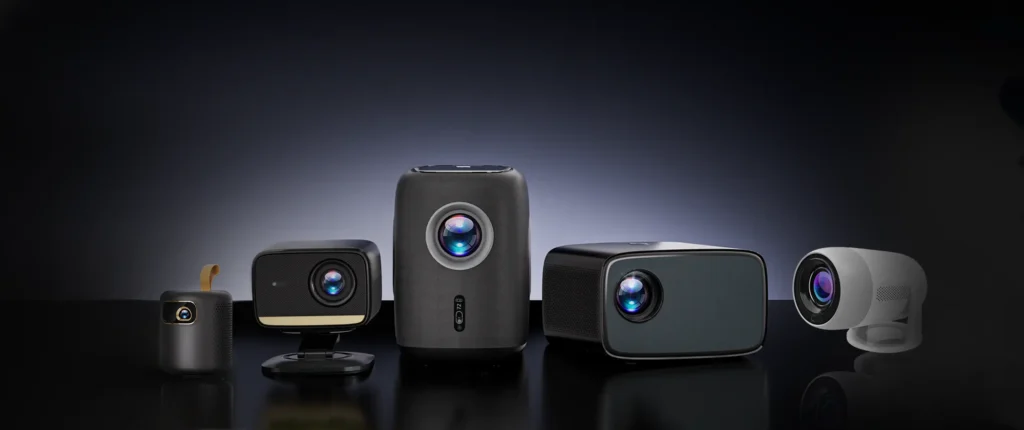
In the era of rapid electronic technology development, both TVs and projectors have been upgraded many times. Being smarter and more functional are their main features today.
The similarities between TVs and projectors
As mainstream home entertainment devices, there are many similarities between TVs and projectors.
They are used for video playback, support high-definition resolutions (4K/8K), HDR technology, and built-in smart operating systems (Android, Google, etc.), which can access streaming services, support screen mirroring, and connect to devices like PCs, game consoles, and so on. Their convenience and intelligent features are quite similar.
The differences between TVs and projectors
However, there are still many differences between a projector and a TV.
Display Technology
First of all, the display technologies are different. Generally, TVs use technologies like OLED or Mini LED, which feature high brightness, contrast ratio, and color accuracy. These are more suitable for bright environments.
The main display technologies of projectors are LCD, DLP, LCoS, and so on.
Brightness
In terms of brightness, TVs indeed have higher brightness, but some customers report eye strain after watching for a long time. Some people prefer the softer light from projectors.
One important factor affecting projector brightness is ambient light. Projectors usually require a dark or low-light environment to maintain picture clarity, except for some high-lumen models suitable for daytime use.
Size & Installation
Regarding size and installation, TVs are limited by fixed screen sizes and installation methods, while projectors offer more flexibility.
As we know, most projectors feature a portable design, and their installation is flexible — they can be placed on a table, mounted on the ceiling, or even carried in a bag. This allows users to set them up according to different application scenarios.
Screen Size
One major advantage of projectors is the large screen. Many customers choose projectors for the immersive, cinema-like experience in a dedicated space. This is something TVs cannot easily achieve.
What is ALR projector screen?
Price
Another key concern for customers is price.
In general, some mid-range TVs are quite affordable — for example, a 75” Mini LED TV may cost around USD 600–1000. However, prices increase sharply for ultra-large TVs.
For projectors, prices also vary significantly. A portable projector costs around USD 100–300, usually with 720P or 1080P resolution. But a high-end 4K laser projector can cost up to USD 1,000.
Additionally, projectors often need to be paired with a screen. If you choose an ALR (Ambient Light Rejecting) screen , that’s an extra cost to consider.
Conclusions
In fact, there is no exact answer to which one is better. It’s a trade-off — both projectors and TVs have their advantages and limitations.
Customers should choose according to their own concerns and requirements.

